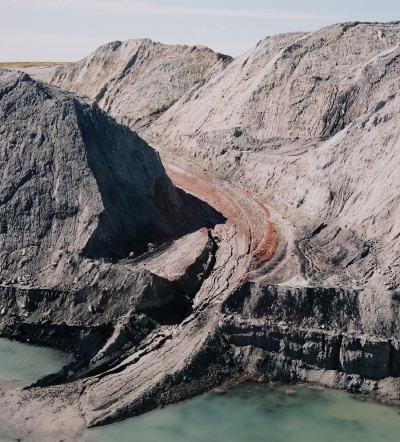Last April, the Deepwater Horizon tragedy showed us how crude oil can devastate an environment. But it’s not just explosions or spills that have hazardous effects on our fragile ecosystem. Sometimes, damage can be continuous and insidious—like it is at Colstrip, an enormous coal mine in southeastern Montana. Colstrip has the distinction of being one of the nation’s dirtiest, most polluting plants: each hour, it belches more than 400 pounds of sulfuric acid into the air, and its waste also filters down to the local water table, spreading toxins far and wide.
How do you convey this kind of unremitting, non-sensational damage? David T. Hanson took up the challenge, spending three years documenting the Colstrip plant and its surrounding town. His beautiful, melancholy images, which are now published in Colstrip, Montana (D.A.P.), were actually shot in the 1980s, but given our growing concerns about skyrocketing energy costs, peak oil, and environmental decay, they seem even more timely now.
The images are unsettling for several reasons. Hanson has a keen eye for color and composition, and there’s a classical beauty to most of the photographs. Shot from above, even deep gashes in the landscape and irridescent green waste ponds can look attractive, like a Rothko or Diebenkorn canvas. Even in devastation, there is beauty: anyone who doubts that need only look at Joel Meyerowitz’s photographs of Ground Zero or Robert Polidori’s studies of empty rooms after Katrina.





 Facebook
Facebook Permalink
Permalink Digg
Digg Reddit
Reddit LinkedIn
LinkedIn StumbleUpon
StumbleUpon Tumblr
Tumblr

